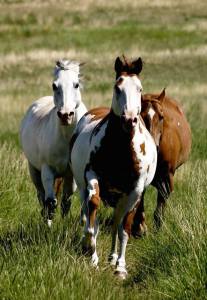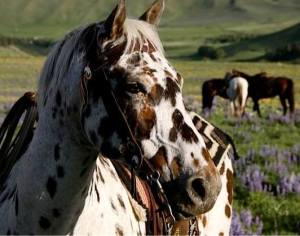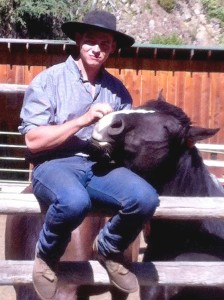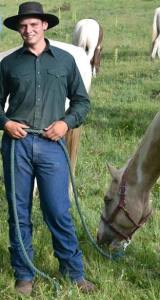At BestHorsePractices, we connect equine research with everyday interactions and share the discoveries of good research with Regular Joe’s.
Follow Fred is a regular feature. It features a young man with his feet firmly in both BHP camps: horsemanship and science.
Holcomb, a student at Davidson College, has excelled at English and Western riding, including a lengthy stint at the Alvord Ranch with Martin Black and seminar work with Black and Dr. Steve Peters. Read more about Holcomb.
At Davidson, Holcomb pursues a psychology degree with a minor in neuroscience. His senior thesis, including a summer research project on a Wyoming ranch, focuses on equine cognition.
Read more about Follow Fred.
In this installment, Holcomb elaborates on the preparation necessary for the actual field work, completed at the HF Bar guest ranch this summer. Check out the HF Bar.
By Fred Holcomb
Active data collection took place this summer at HF Bar guest ranch, but it represented just a fraction of my research project work.
 It started last fall with an initial literature review. “Good science” is about building on previous work and filling in gaps that represent lack of examination or lack of understanding. I spent hours in the Davidson College library before I ever approached a horse with the intent of studying it.
It started last fall with an initial literature review. “Good science” is about building on previous work and filling in gaps that represent lack of examination or lack of understanding. I spent hours in the Davidson College library before I ever approached a horse with the intent of studying it.
I reviewed the relevant literature to both get a better feel for current research methodologies and to narrow down my research question. After establishing what I wanted to examine and how (which involved a LOT of back and forth with advisor Dr. Kristi Multhaup), I proposed my research idea to the school and got approval of my methodology from Davidson’s IACUC (Institutional Animal Care and Use Committee). Animals can’t consent to research, so review boards like Davidson’s IACUC are crucial in assuring that animal harm is absolutely minimized and that any stress induced by the research procedures is justified.
There were months of preparation, but that didn’t mean I could simply throw horses into my pre-set experiment once in Wyoming. Even the best made laboratory procedures need some revising once you get into the field.
A number of aspects had to be revised once we were able to examine them in real time with equine participants. The pilot testing (experimental trials that allow you to evaluate research procedures and make any necessary changes) took over a month.
We worked:
- to make sure the task was safe for my research assistant, the one doing the actual riding,
- to ensure it was challenging enough for the horses (since we were gauging improvements.
Hours of library work mean nothing to a horse. Pilot testing was vital in making sure my experimental procedure tested what I wanted it to test.
With our experimental procedures finalized, we began the official testing trials. Those trials brought their own challenges:
- Weather inconsistencies
- Horse injury
- Goings-on at a 200-head horse ranch
 These issues could get in the way of a consistent training schedule. Despite those hurdles, we brought 38 horses through the research program over two months. We evaluated each horse at multiple time points and video-recorded all training trials.
These issues could get in the way of a consistent training schedule. Despite those hurdles, we brought 38 horses through the research program over two months. We evaluated each horse at multiple time points and video-recorded all training trials.
Now, back at school in North Carolina, I will evaluate the hours and hours of video. In order to do that objectively, I am developing a coding scheme (a set of specifically defined behaviors, what the behaviors look like, what counts as an initiation or completion of that behavior).
Once I have specifically defined those behaviors, I will give the video to a hypothesis blind scorer (someone who doesn’t have any research bias and doesn’t know my hypothesis). That scorer will use my coding scheme to evaluate the videos and record the frequency and duration of the different behaviors. We will use that data to compare responses of horses in different training conditions and to see if manipulations affected their behavior.
I’ll need to conduct statistical analysis to see if differences in behavior are products of my experiment or if they can be attributed to chance. Once the statistical analysis is complete, I will compile all of the information, from initial literature review to the stats, into a single, concise piece of writing. This work will become my senior thesis for my Psychology major. Once it is completed, I will also submit it for review for publication in a scientific journal.
And, if that is successful, then it’s on to the next project!

